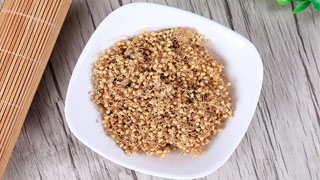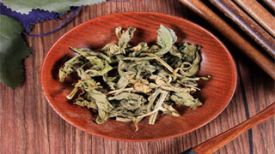
1. Aliases
Millet sprouts, tillers, millet tillers, rice tillers, and rice sprouts.2. Plant morphology
Annual herbaceous plant. The pole is upright and smooth. The leaf blade is lanceolate or lanceolate, with a pointed tip and a circular base. The lower part is relatively bare, while the upper part is rough; The leaf sheath is smooth and hairless, with soft hairs at the sheath opening and slightly ciliated. The terminal panicle is spike shaped, usually drooping, and the spike axis is densely covered with fine hairs; The spikelet is elliptical in shape, with 1-3 bristles at the base. The bristles are usually brown or purple, and rare green; The first spikelet is ovoid, about 1/3 of the length of the spikelet, with 3 veins; The second glume is elliptical, equal in length to the lemma of the infertile small flower, with 5-7 veins; The lemma of infertile small flowers is elliptical, while the lemma of sturdy small flowers is flat convex elliptical, 3-veined, with wrinkles and curls on the surface, enveloping the lemma. Grains are equal in length to the first lemma, ovoid or spherical in shape, with fine point like wrinkles, and detach from other spikelets when mature. The flowering period is in summer and autumn.
3. Origin distribution
Produced throughout the country.
4. Harvesting and processing
Soak the millet in water, maintain appropriate humidity and temperature, and let the fibrous roots grow to about 4 millimeters before drying.
5. Characteristics of medicinal herbs
Quasi circular, with a diameter of about 2 millimeters, blunt at the top and slightly pointed at the base. The shell is a leathery lemma with light yellow spots and wrinkles. The lower end has a primary fine fibrous root, 2-5 millimeters long. The lemma is peeled off and contains one light yellow or yellow white glume (millet). Odorless, slightly sweet in taste. The germination rate shall not be less than 85%.
6. Nature, taste, and meridian tropism
Warm in nature and sweet in taste. Guipi Meridian and Stomach Meridian.
7. Effect and function
Digestive and moderate, invigorating the spleen and appetizing. It belongs to the category of disinfectant.
8. Clinical applications
Dosage 9-15 grams. Used to treat food retention, bloating and bad breath, spleen and stomach weakness, and lack of appetite.
9. Pharmacological research
The digestive enzymes and vitamin B contained in it help with digestion; Boiling and stir frying grain sprouts can reduce their digestibility.
10. Chemical composition
It mainly contains ingredients such as yeast, amylase, vitamins, starch, maltose, choline, and various amino acids.
11. Taboos for use
Patients with gastric prolapse should avoid using it.
12. Compatibility prescription
① Treatment for indigestion and loss of appetite: 12g stir fried corn sprouts, 9g stir fried koji, 12g malt, 9g stir fried hawthorn, and 9g chicken inner gold. Boiled in water. (Shandong Chinese Herbal Medicine Handbook)
② To treat chest tightness and bloating: stir fry 12g of grain sprouts, stir fry 9g of radish seeds, and 9g of tangerine peel. Boiled in water. (Shandong Chinese Herbal Medicine Handbook)


